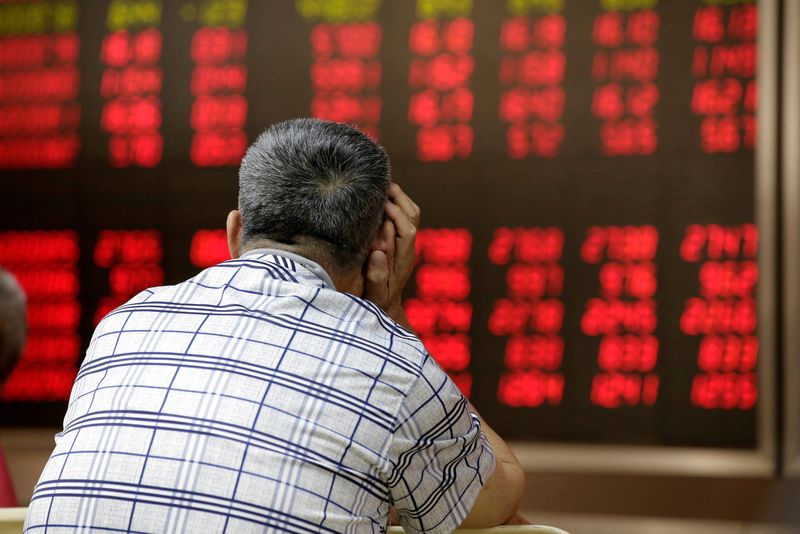
Inverted swaps curve shows investors pare China rate cut bets

SHANGHAI (Reuters) – Investors are dialling back bets on near-term rate cuts in China, the derivatives market shows, as expectations grow that policymakers will refrain from easing policy when the yuan is weakening.
Yuan interest rate swaps (IRS), which domestic investors use to hedge as well as express their views on rates, have been inverted for nearly four weeks, with front end yields trading above longer ones. That inversion has been driven by a rise short-term rates as expectations for rate cuts recede.
On Tuesday, the gap between five-year IRS and one-year swaps was at its most negative in nearly a decade, at minus-9 basis points.
“The inversion signals the markets are dialling back expectations of People’s Bank of China (PBOC) interest rate cuts and in the reserve requirement ratios (RRRs),” analysts at Commerzbank (ETR:CBKG) said in a note.
“This comes amid concerns over yuan stability. Indeed, widening China-U.S. bond yield differentials and lingering uncertainties surrounding U.S. trade tariffs have exacerbated yuan weakness against the dollar. This will limit PBOC’s room to manoeuvre on monetary easing.”
Investors have been bracing for rate cuts, driving bond yields down aggressively, after Chinese authorities pledged last year to adopt an “appropriately loose” monetary policy in 2025, marking the first easing stance in more than a decade.
But their efforts to stimulate a limp economy come alongside broad depreciation pressures on the Chinese yuan from a widening gap between U.S. and Chinese yields and escalating trade tensions with the U.S. and other economies.
China’s yuan has lost more than 3% to the dollar since the U.S. election in early November, on worries that Trump’s threats of fresh trade tariffs will heap more pressure on the struggling Chinese economy. [CNY/]
“The next policy-rate/RRR cut is likely to be after the U.S. presidential inauguration date, as the central bank avoids imminent easing to defend the exchange rate,” said Ju Wang, head of Greater China FX & rates strategy at BNP Paribas (OTC:BNPQY).
China has stepped up measures ranging from verbal warnings, tweaks to capital flows and issuance of offshore yuan bills to put a floor under the declining yuan.
Interest rate swaps and bond futures are the main avenues for those wishing to bet against rate rises in China, since short-selling of bonds is not possible.
There were also signs of liquidity conditions tightening ahead of traditional demand for cash during the week-long Lunar New Year holidays at the end of January. The central bank has, however, been cautious with cash injection due to concerns about the yuan, traders said.
The volume-weighted average rate of the benchmark overnight repo traded in the interbank market, considered the best indicator of general cash conditions, surged to 1.9636% on Tuesday, the highest level since June 2024.


